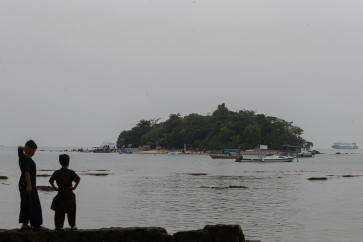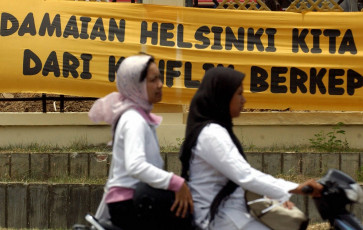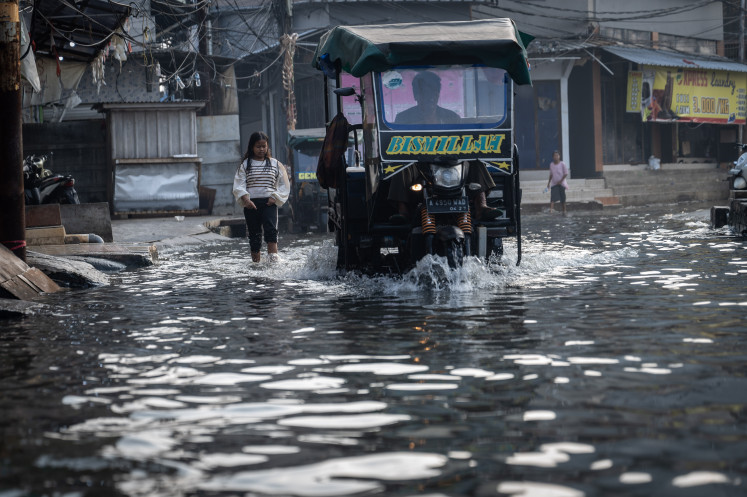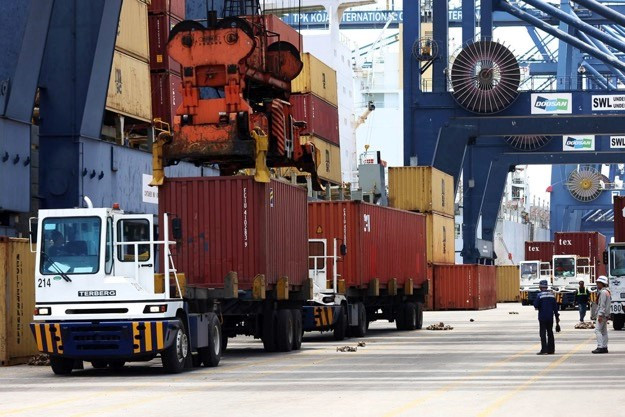Popular Reads
Top Results
Can't find what you're looking for?
View all search resultsPopular Reads
Top Results
Can't find what you're looking for?
View all search results60% of forest fires in Kalimantan, Sumatra not on concession land
Change text size
Gift Premium Articles
to Anyone
 Officers spray water on forest fires in a concession area in Tulung Selapan, Ogan Komering Ilir, South Sumatra, on Oct. 28, 2015. (JP/Jerry Adiguna )
Officers spray water on forest fires in a concession area in Tulung Selapan, Ogan Komering Ilir, South Sumatra, on Oct. 28, 2015. (JP/Jerry Adiguna )
S
atellites detected almost 700 fires across Kalimantan and Sumatra last week, as the thick haze from land burning on the two Indonesian islands began blanketing the skies over Malaysia and Singapore.
However, the data from Global Forest Watch (GFW) also found that 60 percent of the fires were spotted outside concession areas that were not managed by plantation firms. GFW, an initiative of American think-tank World Resources Institute, produces detailed maps and analyses of forest fires around the world.
The latest satellite information from its website largely supports the findings of Indonesia's National Disaster Management Agency (BNPB).
Sutopo Purwo Nugroho, who heads the BNPB's data and information division, said Monday that "a majority" of fires recorded this year were started by errant individuals instead of companies.
"As we can see here on the satellite map, the fires are on the outer parts of the plantation areas," he said during a briefing at the BNPB headquarters in Jakarta.
"So very clearly, they are burning to clear land to make way for new plantings."
Sutopo was referring to farmers who still "slash and burn" - a land-clearing method known to spark uncontrollable fires that have led to the region's haze crisis.
However, six plantation firms were singled out in the GFW analysis, showing "fire alerts", which Sutopo said represented actual fires, in eight concession areas managed by the companies.
They include pulpwood firms Sumatera Riang Lestari (23 fires), Arara Abadi (15), Riau Andalan Pulp & Paper (12), Rimba Mutiara Permai (five) and Seraya Sumber Lestari (four), as well as palm oil company Karya Makmur (two).
Forest fires, mainly in Kalimantan and Sumatra, raged for more than three months towards the end of last year. The thick smoke caused more than half a million Indonesians to suffer from respiratory illnesses. At least 19 died.
However, the 697 fires recorded in Kalimantan and Sumatra from Aug 21 to Sunday marked a vast improvement when compared with the 5,724 fires detected over a similar eight-day period last year.
Sutopo said that the BNPB has recorded a 61 percent decline in the number of hot spots this year, attributing it to favorable weather conditions, as well as a more cohesive public-private sector approach in preventing and fighting fires.
He added that the government has sufficient resources to handle the fires and will not need additional assistance as it aims to put out all fires by October this year.
While climate change experts do not expect a repeat of last year's record crisis, the haze has started to impact airport operations and schools in Riau province.
Flights out of Sultan Syarif Kasim II International Airport in the capital Pekanbaru were disrupted at the weekend after the haze caused visibility to fall to just 2 km.
Schools in Riau's Bengkalis regency were closed Monday after it was hit by thick haze that caused eye irritation and reduced visibility to around 500 m.






